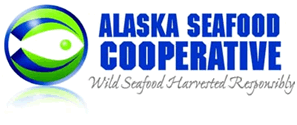For Immediate Release, June 1, 2010
Marine Stewardship Council certifies Alaska’s flatfish trawl fisheries
Contact Jason Anderson at (206) 462-7690 or jasonanderson@seanet.com
Fisheries for all the major flatfish species harvested off Alaska were today certified as sustainable under the Marine Stewardship Council (MSC) environmental standard for sustainable and well managed fisheries. With the certification of Pacific cod in January of this year and earlier certifications of pollock, halibut, sablefish, and Alaska salmon, this most recent certification of flatfish species means that most of the major Alaska fisheries are now certified as sustainable and well managed under the MSC program. The Best Use Cooperative brought the flatfish fisheries forward for MSC certification and worked with NOAA scientists and certifier Moody Marine Ltd. throughout the three year MSC certification process. The MSC certification process requires an extensive assessment of all aspects of candidate fisheries by a panel of independent fishery scientists who evaluate the sustainability of fisheries against the MSC’s demanding fishery science and management principles.
“The Alaska flatfish fisheries have undergone a profound and thorough evolution overthe last 15 years to address bycatch, discard, and habitat effects issues” said John Gauvin, Fisheries Science Projects Director for the Best Use Cooperative. “This process has involved a great deal of hard work by fishermen, boat owners, fishery scientists, and managers to craft innovative ways to control fishery catches and modify fishing practices to address environmental issues and sustainability demands in the Magnuson-Stevens Act. We are very pleased to see that this tremendous effort has been acknowledged by our attainment of the MSC’s demanding sustainability certification”.
Trawl fisheries in both the Gulf of Alaska (GOA) and Bering Sea and Aleutian Islands (BSAI) have been certified. In the BSAI, species eligible to be sold as MSC certified include trawl caught:
- Yellowfin sole
- Flathead sole
- Arrowtooth flounder
- Alaska plaice
- Northern rock sole
- Pacific cod
In the GOA, species eligible to be sold as MSC certified include trawl caught:
- Flathead sole
- Arrowtooth flounder
- Rex sole
- Northern and southern rock sole
- Pacific cod
The North Pacific Fishery Management Council (Council) has been a major driver in the conservative management of these fisheries since foreign fishing ended in the early 1980s. Over the last decade, scientists have set the cumulative allowable catch limit for Bering Sea flatfish species at approximately one million metric tons (mt) annually. However, the actual catch has been much lower, ranging from 200,000 to 250,000 mt a year. By and large, this is due to precautionary management actions, including conservation-based groundfish harvest, bycatch limits, and fish habitat protections.
Fishing is undertaken by “catcher-processors” that have equipment on board to head, gut, and freeze the fish and “catcher boats” that deliver fresh fish to shoreside processors. Catcher processors range in size from 110 to 270 feet and operate in the BSAI as well as the GOA. Catcher boats range in size from 60 to 90 feet and fish predominantly in the GOA.
Bycatch management has been a major concern for the National Marine Fisheries Service (NMFS) and the Council. To help reduce bycatch and discards, the Council and NMFS recently implemented new incentives that ended the “race for fish” for these species in the BSAI. Beginning in 2008, BSAI flatfish catcher processors were allowed to form cooperatives, and allocate flatfish quotas and bycatch limits among the cooperatives. “This has allowed each group to be responsible for its own target catch and bycatch, providing a strong incentive for co-ops to keep bycatch rates low and reward those who fish cleanly and efficiently,” says Bill Orr, president of the Best Use Cooperative.
To support this cooperative program, NMFS has also implemented an at-sea monitoring program under which fishery observer coverage of flatfish vessels is extensive and around the clock.
Because flatfish live close to or on the seabed, non-pelagic trawls are used. Nonetheless, bottom contact has been reduced by 90% in these fisheries in recent years. To accomplish this, BUC captains and personnel have engaged in collaborative research with NMFS scientists to develop modified flatfish gear called “Bering Sea flatfish gear”. This modified gear principally uses sweeps raised off the seafloor by bobbins spaced at 30 meter intervals to herd flatfish into relatively small nets where the fish are captured. Research by NMFS scientists has shown that use of elevated sweeps dramatically reduces effects of fishing on seafloor habitat and associated species such as crab and structure forming animals called epifauna.
BUC members include seven companies and sixteen trawl catcher-processors that harvest groundfish in the BSAI and GOA. BUC vessels catch multiple groundfish species, process catch, and freeze the resultant product on board. Further information, including a link to a video and brochure summarizing BUC, can be found at: www.bestusecooperative.org.
